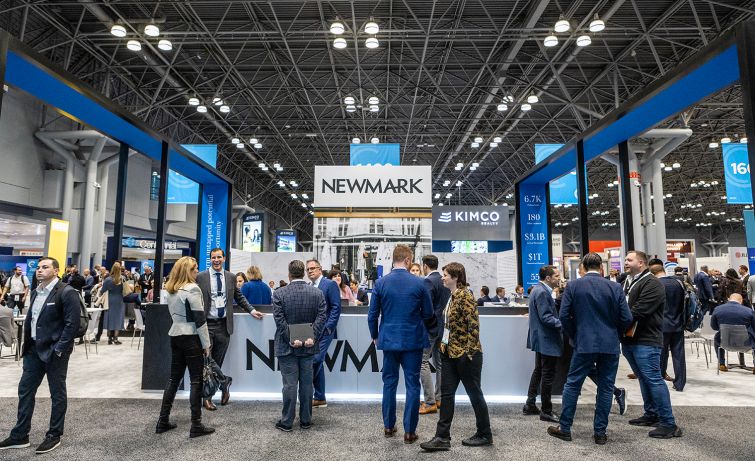Sunday Summary: Retail Is Back, Baby!
By The Editors December 11, 2022 9:00 am
reprints
Maybe it’s the fact that ICSC came rolling into the Javits Center, but we were channeling some inner George Costanza about retail last week.
Retail bombshell No. 1: Daniel Boulud is opening a steak restaurant at SL Green (SLG)’s One Madison Avenue. (We’re not sure if anything with Boulud’s elegance can be properly called a “steakhouse,” but whatever it’s called we’re excited.)
Retail bombshell No. 2: When it’s not courting one of the greatest chefs in the world, SL Green is enlisting Jay-Z’s Roc Nation to be a part of the casino it’s hoping to build at 1515 Broadway.
Retail bombshell No. 3: Look at the rest of the article mentioned above. SL Green is far from the only real estate company rolling out big plans for casinos in Gotham. Thor Equities is hoping to hit a big jackpot in Coney Island, and Stefan Soloviev’s Soloviev Group is putting his chips on a 9-acre parcel near the United Nations campus that he’s hoping to redevelop as a casino.
Retail bombshell No. 4: There are retail leases coming fast and furious! Adidas renewed its 31,000-square-foot space at 610 Broadway; the Miami-based Carrot Express is opening its second and third locations in Midtown (something coming from Miami to New York? That’s just dogs-and-cats-living-together talk!); also in Midtown, Naya is opening another outpost of its Middle Eastern fast casual spots at RFR’s 285 Madison Avenue; and jewelers Sandeep Diamond Corporation and IDD USA are each taking 13,114 square feet at The Moinian Group’s 545 Fifth Avenue.
Retail bombshell No. 5: The whole pickleball craze is actually translating into real estate deals. In Washington, D.C., Kraken Kourts announced it was opening a 70,000-square-foot facility consisting of 16 pickleball courts, a tavern and the District’s first indoor roller-skating rink at MRP Realty’s Bryant Street NE complex. Not to be left out, Baltimore Pickleball Club is opening the first indoor facility dedicated exclusively to pickleball. It’s a 12,000-square-foot spot at Timonium Exchange, in Timonium, Md.
It’s the kind of activity that makes you want to sit back and sip a cold one.
That’s more possible in New York because beer brewers are being actively courted by some of the city’s biggest landlords.
Twelve years ago there were only three breweries operating in New York City; today the number is 42 and they’re in every borough. And one sees how in-demand they are when a landlord like the Durst Organization calls a modest brewer like Finback and asks them if they want to set up shop in their Queens residential building called Sven.
Wait, what about ICSC?
Oh, yes, back to the Innovating Commerce Serving Community. (Previously it was called the International Council of Shopping Centers. If they’ll accept some friendly criticism, they should really go back to the previous name.)
We learned some interesting things this year at Javits. For one, the savvy brokers are not sleeping on social media.
Azor Advisory Services’ Beth Azor, for one, told a panel that she had arranged 51 short-term leases at Tower City mall in Cleveland through Facebook and Instagram DMs.
“We were making thousands of dollars every month from a social media post,” said Ed Ryland of Arvo Realty Advisors on the same panel. “And it was at that moment that this man [Ed Ryland] decided social media was valuable. And every morning at 5 a.m., now and for the rest of the time that he’s here, he is posting every single morning on LinkedIn.”
We also learned that the real secret sauce to a retail revitalization would be a downtown revitalization.
“The elephant in the room is that people are not in downtowns — at least in office-centric downtowns — the way they were,” said Larisa Ortiz, managing director at Streetsense, on another panel. “We have to think about putting people in these buildings whether they’re working or they’re living, because they come downstairs and they spend money.”
Makes sense.
But the thing that might have put us in such a good mood at this year’s ICSC was the sense of optimism after years of apocalyptic pessimism regarding retail.
“Everybody is aware of [the potential recession] and it’s challenging from a macroeconomic perspective. But, as of right now, people are coming to New York, and the people who live here are spending money,” said Cushman & Wakefield (CWK)’s Steven Soutendijk. “People are making a paycheck, people are sitting on savings that they didn’t have in 2008, 2009. … Even if we do have another recession, it seems like it’s going to be a lot smoother than the last one we had.”
Conferences galore!
Last week was not just ICSC. Some of the heaviest hitters came to the New York University Schack Institute of Real Estate’s Capital Markets Conference at the Pierre Hotel, including Mayor Eric Adams. And, we’ll admit, the talk was a little less rosy.
We heard more sobriety in Los Angeles, too, at Commercial Observer’s Future Forward conference, especially when it came to the office market.
“People aren’t coming back to the office — and, if they are, [companies] probably don’t need as much space [as they used to],” said Acore’s Kyle Jeffers. “It’s just a really complicated asset class to lend on right now. It has to be really safe and bulletproof to do an office deal today.”
Even the state of Los Angeles’ multifamily market was worrying, especially given the new tax passed in November which imposes a 4 percent levy on properties sold for more than $5 million, and 5.5 percent on those sold for more than $10 million.
“That [transfer tax] is going to be a killer and stop people from investing [in Los Angeles],” Kevin Ratner, chief development officer at The Max Collective and a former Forest City Realty Trust executive, said on one of the afternoon’s panels.
It’s not you, it’s me
Is there such a thing as an amicable breakup?
Well, we’re about to find out, because after 43 years in business together Stephen Ross of Related Companies said he had “just kind of split recently, very amicably” with Jorge Pérez of Related Group.
The two kings of New York and Miami real estate launched their partnership in 1979 to build affordable housing in Miami. How could this have happened? If Ross and Pérez can’t make it, can any of us make it?
It almost made us forget about the other big Miami news last week, like the fact that the University of Miami is priming to build a $100 million complex for its football team.
And that Moishe Mana snagged $275 million in financing from Centennial Commercial Finance Group for a portfolio of 17 low-rise properties in Wynwood.
And that Lincoln Property Company refinanced its 11-acre 297-unit property, Amalta Broken Sound Apartments, to the tune of $108.5 million.
And that ADT signed a 104,000-square-foot lease in Boca Raton.
In our younger and more vulnerable years…
Of course, the biggest thing for the humble editors and reporters over at CO was that last week we put out our annual Young Professionals issue.
This is a months-long undertaking where brokers, bankers, lawyers, engineers, architects and contractors flood our inbox asking for consideration.
While we might spend a disproportionate amount of time talking to the very top of the industry, this is an extremely important issue for us. Any publication worth its salt needs not just to be able to take in the current landscape but to have some sense of the future.
Given how rough the waters of the last three years have been (good god – three years in March?!) the ones who made it through to the other side will have war stories to tell some day. They will be able to tell the class of 2040, “You don’t know what the industry was like back in 2020 when the world shut down. Go get me a beer from one of those New York City breweries and I’ll tell you all about it.”
As CO reported late last month, the real estate business has seen a dispiriting amount of job attrition among the young. A detail one might have missed from this report was:
“Out of Commercial Observer’s 30 Young Professionals profiled in 2021, at least three have left commercial brokerage for other industries or graduate school, according to LinkedIn.”
No one can say that about the ’22 class. (We spoke to them all!)
We profiled the 30 gritty brokers and advisers under 30 years old who survived the worst the industry could offer, 25 bankers and lenders under 35 who kept their head down and didn’t panic even as lending institutions froze, and 20 architects, engineers, contractors and proptech gurus under 35 who looked at the landscape creatively and didn’t let the uncertain economic climate soften their enthusiasm.
It’s all worth a long, leisurely look.
Have a wonderful week — see you next Sunday!


